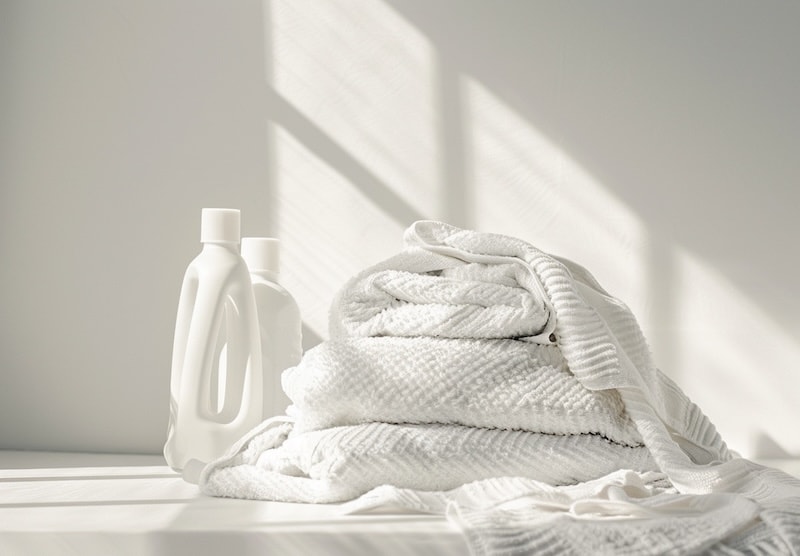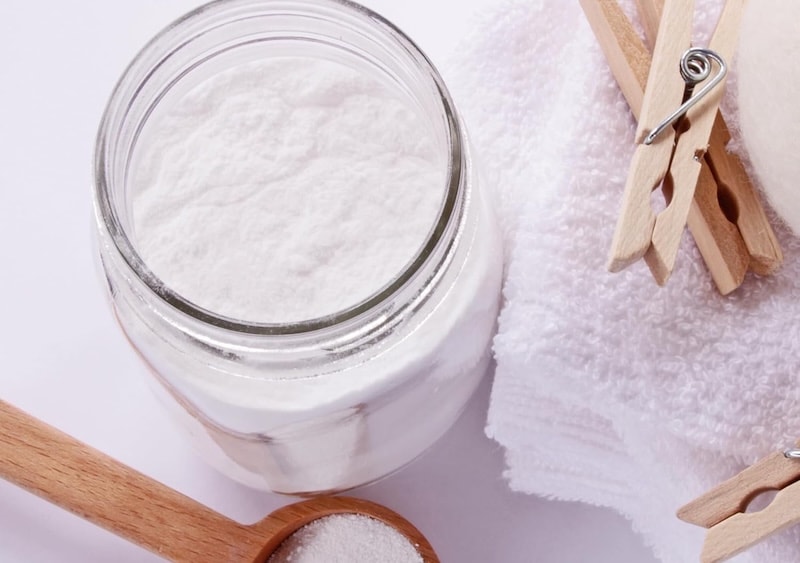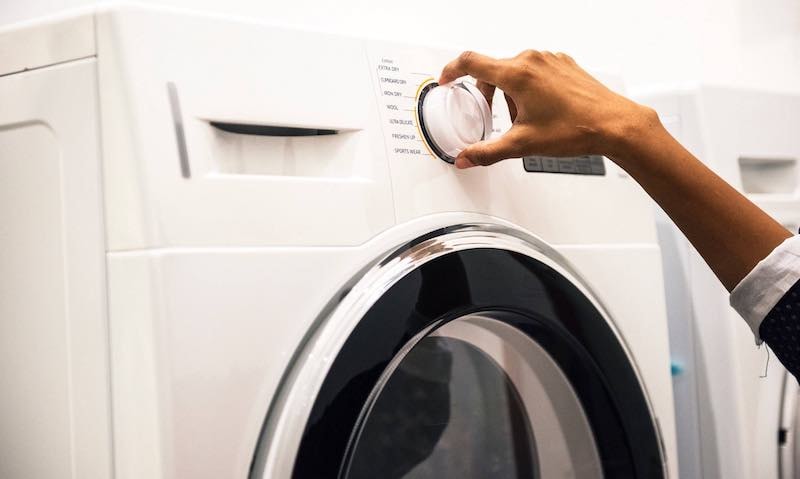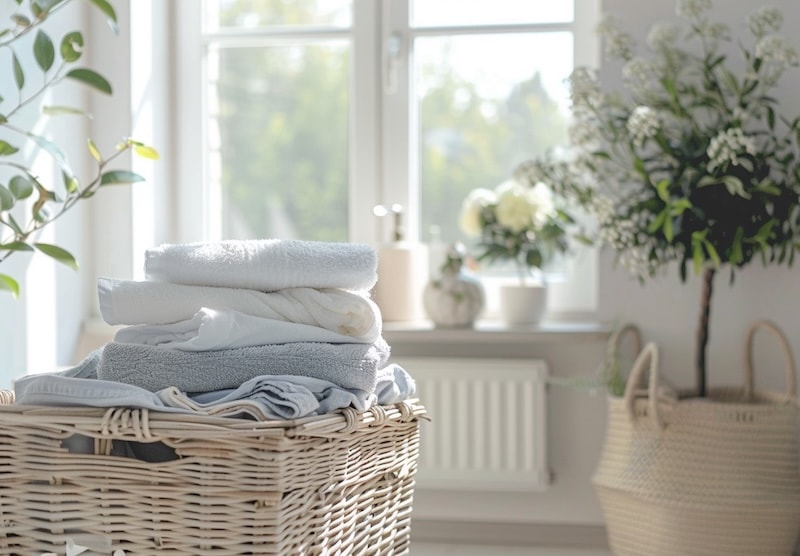Table of Contents
Best DIY Laundry Detergent Recipes: Simple and Effective for a Healthier Home
This page may contain affiliate links. We may earn a commission on purchases, at no additional cost to you. Learn more →
Welcome to a space where your health and your family’s well-being take center stage. Just like swapping out toxic candles for clean ones or scrutinizing the lotions in your bathroom, your laundry routine also deserves a closer look. After all, freshly washed clothes shouldn’t come at the cost of our health.
As a mother and founder of a sustainability-focused company, I’ve learned that no one will hand us good health on a silver platter—it’s a conscious choice we make every single day. And one of the simplest yet most impactful choices we can make is ditching conventional laundry detergents for gentle, eco-friendly, and DIY laundry detergent. If you’re ready to keep your wardrobe (and your conscience) spotless, this guide is for you.
Key Takeaways
-
Conventional detergents often contain harmful chemicals like phosphates, artificial fragrances, and harsh surfactants that can irritate skin, disrupt hormones, and pollute waterways.
-
DIY laundry detergents let you control every ingredient, ensuring a safer and more affordable wash cycle.
-
Plant-based, mineral-based, and fragrance-free options aren’t just for “crunchy” folks—they’re a wise choice for anyone looking to cut down on toxins in their home.
-
Switching to DIY is about small steps: you don’t have to be perfect, just intentional.
Why DIY Laundry Detergent ? The Heart of a Non-Toxic Lifestyle

If you’ve already done a big bathroom cabinet purge—tossing toxic soaps, lotions, and mysterious potions—making your own laundry detergent is a natural next step. Clothes come into direct contact with your skin all day long (and your kids’ skin, too!). So it only makes sense to keep them free of chemicals that can cause everything from rashes to respiratory issues.
Here’s Why Going DIY Matters
-
Better for Health: No one wants nasty chemicals lingering on the fabrics that touch our skin—especially if you have little ones, allergies, or sensitive skin.
-
Kinder to the Planet: Conventional detergents often come ususally in plastic jugs and contain non-biodegradable ingredients that harm aquatic life. With a homemade recipe, you typically use simple, earth-friendly components and minimal packaging.
-
Cost-Effective: Tally up the price of store-bought brands (especially the “clean” or “organic” ones), and you’ll see how quickly it adds up. A DIY batch can be just pennies per load, a fraction of the price of commercial options.
-
Customizable: Skip fragrances altogether or add essential oils you trust. You decide exactly what goes into your detergent—no more surprise ingredients.
Conventional Detergents: What Makes Them So “Dirty”?
It’s hard to believe that something labeled “fresh scent” or “clean breeze” could actually be packed with questionable chemicals. But conventional detergents are often loaded with so many harsh chemicals, that can lead to skin irritation, eye irritation, and even hormone disruption. Fragrances often include chemicals that can disrupt hormones and cause health issues.
While many safe ingredients are available, knowing what to avoid is equally important.
Avoid These Harmful Ingredients
-
Phosphates: Great for cleaning, bad for our waterways (they cause algae blooms that starve aquatic life of oxygen).
-
Synthetic Fragrances: A laundry list of hidden chemicals that can trigger asthma, skin irritations, or hormonal imbalances.
-
Optical Brighteners: They don’t really clean clothes—they just trick your eyes into thinking they’re brighter. Plus, they can lead to skin sensitivity.
-
Sulfates (SLS/SLES): These create foam but can dry out or irritate skin.
It’s no surprise that many people suffer from allergies or sensitivities without ever suspecting their detergent. Knowledge is power, so let’s put the power back in your hands.
Your DIY Detergent Toolkit: Safe Ingredients for Homemade Laundry Detergent

Before we jump into recipes, let’s introduce the MVPs of DIY laundry detergent. Most of these items are affordable, easy to find, and safe for you and Mother Earth.
-
Baking Soda * is a staple, acting as a cleaning agent, deodorizer, and water softener, which enhances detergent performance. It also balances pH levels.
-
Washing Soda * (Sodium Carbonate) is another essential component, enhancing detergent effectiveness by breaking down stains and grease.
-
Borax* (Optional) - A natural mineral that boosts cleaning power. If you prefer to skip it, up the baking soda or washing soda.
-
Castile Soap * (Bar or Liquid) - Gentle, plant-based soap derived from olive oil (and sometimes coconut or hemp). It is a natural surfactant, cleans without the harsh chemicals found in commercial detergents. You can use either liquid castile soap or grated castile bar soap, depending on your preference and the type of detergent you’re making. These ingredients are simple, non-toxic, and safe for both your family and the environment.
-
Soap Nuts *(Soap Berries) - The ultimate “back to nature” approach, these berries release natural saponin when agitated in water.
-
Essential Oils* (e.g., lavender, lemon, tea tree) - Optional for scent. Make sure to choose high-quality oils.
-
White Vinegar* - Makes for an excellent natural fabric softener in the rinse cycle. No, your clothes won’t smell like pickles!
Pro Tip: Start with washing soda + baking soda + grated castile soap. That trio alone will give you a low-cost, gentle and effective detergent.
If you have extremely hard water, consider occasionally using a water softener or adding a few tablespoons of vinegar or citric acid to the rinse cycle. This helps prevent residue or ‘soap scum’ from building up on clothes.
Creating your own laundry detergent offers flexibility to avoid unnecessary additives. For instance, you can leave out fragrances, which are often made with harmful chemicals that can trigger allergies or skin sensitivities. The simplicity of homemade detergent and knowing exactly what’s in it offers peace of mind.

Simple DIY Laundry Detergent Recipes
Let’s get started! Here are four simple DIY laundry detergent recipes: powdered, liquid, one for sensitive skin and a minimalist soap-nuts option. Each type has its unique benefits and is easy to make with a few basic ingredients. Powdered laundry detergent tends to be more effective and easier to store, while liquid and gel detergents are great for those who prefer a more traditional detergent consistency.
These recipes are quick to prepare, taking about 10 minutes from start to finish. Whether you’re new to DIY or a seasoned pro, these recipes will help you create a homemade detergent that’s both economical and environmentally friendly.
How do I make my own laundry detergent?
Classic Powdered Laundry Detergent Recipe
This homemade laundry detergent recipe is perfect for those who prefer a more traditional approach to cleaning their clothes. Plus, it’s cost-effective and free from harsh chemicals, making it a great choice for families with sensitive skin.
Perfect For: Busy families who want a quick and dry solution.
Ingredients
-
1 cup Baking Soda
-
1 cup Washing Soda - acts as a cleaner and deodorizer,
-
1 cup Borax (optional) - helps remove stains and brightens whites
-
1 bar Castile Soap, finely grated - is the primary cleaning agent
Instructions
-
Grate the Soap: Use a cheese grater or food processor for a fine, fluffy consistency.
-
Combine: In a large bowl, mix baking soda, washing soda, and borax (if you’re using it).
-
Add Soap: Stir in the grated soap until everything’s evenly combined. This process takes about 10 minutes and yields an effective, easy-to-store detergent.
-
Store: Transfer to an airtight container—an upcycled glass jar works great.
How to Use
-
Load Size: 1–2 tablespoons per load, depending on how soiled your laundry is.
-
Water Temp: Works in cold or warm water. If you notice residue on cold cycles, dissolve the powder in a bit of warm water before adding it.
If you live in a humid climate, store your powdered detergent in a sealed container with a small silica gel packet or place a clean, dry cloth inside to absorb extra moisture and prevent clumping
For cloth diapers or heavily soiled items, some users suggest adding a scoop of oxygen bleach or running an extra rinse to ensure complete removal of odors
Liquid Soap-Nuts Detergent
Perfect For: Those who love a super-natural, minimalistic approach.
Ingredients
-
1 cup Crushed Soap Nuts (around 15–20 nuts)
-
4 cups Water
Instructions
-
Boil: Combine soap nuts and water in a saucepan, bring to a gentle boil.
-
Simmer: Reduce heat, cover, and simmer for about 20 minutes.
-
Cool & Strain: Let it cool, then strain out the soap nuts (they can go straight into your compost!).
-
Store: Keep in a sealed container.
How to Use
-
Load Size: About 1/4 cup per regular load.
-
Scent Boost: Add 5–10 drops of essential oil (like lavender or lemon) to the final detergent if you want a gentle fragrance.
Why I Adore Soap Nuts: They’re biodegradable, hypoallergenic, and grown by nature—like the ultimate “clean living” hack!
Note: soap nuts alone may struggle with heavy odors (like workout clothes), so consider adding extra baking soda or a vinegar rinse if you’re tackling strong smells.
Liquid Laundry Detergent Recipe
Prefer liquid detergent? This recipe is for you. This homemade liquid laundry detergent is perfect for those who prefer a liquid laundry soap and is especially effective in hard water conditions. It’s also a great way to avoid the plastic waste associated with commercial liquid laundry detergents and to create your own laundry soap.
Perfect For: People who love the convenience of liquid detergent but want complete control over ingredients.
Ingredients
-
1/2 cup Liquid Castile Soap
-
1/2 cup Washing Soda
-
1/2 cup Baking Soda
-
1/4 cup Coarse Salt (helps soften water)
-
15 drops Organic Essential Oil (optional)
Instructions
-
Mix the Dry Ingredients: In a medium bowl, combine washing soda, baking soda, and salt.
-
Add Castile Soap: Slowly stir in the liquid castile soap. Add a few tablespoons of warm water if it’s too thick.
-
Scent It: Stir in essential oils if you want a light aroma.
-
Store: Pour into an airtight jar.
How to Use
-
Load Size: 1–2 tablespoons per load.
-
Shake or stir before each use, as separation can occur. For extreme odors, you may want an extra tablespoon of baking soda.
-
Shelf Life: Because this is semi-liquid, give it a stir or shake before each use.
DIY Laundry Detergent for Sensitive Skin
If you or your loved ones are prone to rashes, eczema, or allergies, here’s a specialized recipe focused on mild, soothing ingredients. It leaves out borax and strong fragrances altogether.
Ingredients
-
1 cup Washing Soda
-
2 cups Baking Soda
-
½ cup Finely Grated Castile Soap (unscented bar)
-
(Optional) ½ cup Colloidal Oatmeal (very fine—helps soothe itchy skin; can add a mild texture but wash residue out thoroughly)
Instructions
-
Blend Dry Ingredients: In a bowl, combine washing soda, baking soda, and colloidal oatmeal (if using).
-
Add Soap: Stir in the finely grated castile soap until evenly mixed.
-
Store: Keep in a sealed container, away from moisture.
How to Use
-
Amount: About 1 tablespoon for small loads, 2 tablespoons for larger or heavily soiled loads.
-
Why It’s Gentle:
-
No Borax: Some people find borax irritating.
-
Colloidal Oatmeal: Adds a skin-soothing element (optional).
-
Unscented: Avoid synthetic fragrances or even essential oils if you’re extremely sensitive.
-
If you experience leftover residue or dryness in very hard water, add 1/4 cup of vinegar to the rinse cycle. And if you’re unsure about soap type, consider castile made from coconut or olive oil for extra gentleness
Extra Tips for Sensitive Skin
-
Use a Double Rinse Cycle: Make sure all detergent residue is out, especially if your skin is reactive.
-
Test an Item: Do a small test wash with an old shirt to confirm no irritation occurs.
-
Soften Naturally: Add ½ cup white vinegar to the rinse cycle to soften clothes—no chemical fabric softeners needed.

Tips & Tricks for an Even Cleaner Laundry Routine
-
Vinegar Rinse: Swap out chemical-laden fabric softeners for half a cup of white vinegar in the rinse cycle. It naturally softens clothes and helps remove any leftover detergent residue.
-
Spot Treatments: Stubborn stains? Pre-treat with a paste made from baking soda and water, or dab a little liquid castile soap directly on the stain. Let it sit before tossing into the wash.
-
Go Warm for Whites: If you want to keep whites looking bright, occasional warm washes (plus a scoop of oxygen bleach if you have it) can do wonders.
-
Sensitive Skin?: Pick a recipe without borax, skip the essential oils, and do an extra rinse cycle for peace of mind.
-
Hard Water? : Increase washing soda or add ½ cup of white vinegar in the rinse cycle to combat mineral buildup.
-
Label Everything: Once you start DIY-ing multiple household products, you’ll thank yourself for labeling jars clearly (and adding the recipe for easy refills).
Why DIY Detergent Is a Great Choice—Recap
-
Gentler on Skin: Commercial detergents often contain sulfates, artificial scents, and brighteners that linger on clothes and can irritate skin.
-
Eco-Friendly: You’re reducing plastic waste (fewer detergent jugs), and using biodegradable or naturally derived ingredients.
-
Cost-Effective: Most homemade recipes amount to mere cents per load.
-
Customizable: Whether you want zero fragrance for allergies or a fresh lemon scent from essential oils, it’s up to you.
My Favorite Pre-Made Non Toxic Laundry Detergent Brands
I find that making my own laundry detergent is the most budget-friendly route. But life can get busy. Sometimes I don’t have the extra ten minutes to whip up a batch, and that’s when I reach for these store-bought non toxic detergent brands. They cost more, but they save me time and still keep things eco-friendly:
Branch Basics* Beyond laundry, it can double as an all-purpose cleaner—fewer products to buy overall.
Ecos* An accessible, plant-powered option that fits well in most budgets.
Meliora* Known for its minimal packaging and impressive cleaning power.
Molly's Suds* A longtime favorite in the non-toxic laundry space, especially for families with sensitive skin
Aspen* Formulated with gentle ingredients, and easy to find in many health-minded stores.
Of course, the most budget-conscious choice is still DIY. But if you’re in a busy season of life (or just not in the mood to DIY), these non-toxic alternatives are great to have on hand!

Final Thoughts: Small Steps, Big Impact
When we break it down, non-toxic living isn’t about perfection—it’s about taking small, intentional steps that protect your health, your family, and our environment. Making your own DIY laundry detergent is one of the simplest ways to champion that kind of lifestyle. You’ll cut out harsh chemicals, cut down on plastic waste, and enjoy the peace of mind that comes with knowing exactly what’s in (and on) your clothes.
So, take the leap!
Remember, it’s all about adapting to your own lifestyle—tweak ingredients until you find the perfect match for your family’s needs. With a little experimentation, you’ll have fresh, clean laundry that’s healthier for you and the environment.
Because at the end of the day, no one hands us good health on a silver platter. We choose it!
Happy washing—and here’s to a cleaner, greener wardrobe!
More on Non-Toxic Living

Frequently Asked Questions
How do you make 3 ingredient laundry detergent?
To make a simple three-ingredient laundry detergent, just mix equal parts of borax, washing soda, and grated bar soap in a jar. For an extra touch, you can add some essential oils for a fresh scent!
Does homemade laundry detergent really work?
Absolutely! While big brands rely on strong synthetic surfactants, these DIY options use powerful yet natural ingredients. Stubborn stains might need a quick pre-treat, but day-to-day laundry will come out fresh and clean.
How do I make my own laundry detergent?
Making your own laundry detergent is simple and effective! Just mix 2 cups of Borax, 2 cups of washing soda, and 1 cup of grated soap flakes in a sealed container.
Is homemade laundry detergent effective in cold water?
Absolutely, homemade laundry detergent can be effective in cold water. Just keep in mind that if it doesn't dissolve completely, a quick extra rinse can do the trick!
Is it cheaper to make your own washing powder?
Yes, in most cases, making your own washing powder is more cost-effective than buying commercial brands—especially if you regularly do large loads of laundry. A typical homemade powdered detergent might cost just a few cents per load, compared to $0.15–$0.30 per load for commercial “natural” or “eco-friendly” brands.
Why use Epsom salt in laundry detergent?
Epsom salt can act as a water softener and mild fabric softener, helping your detergent perform better—especially if you have hard water.













